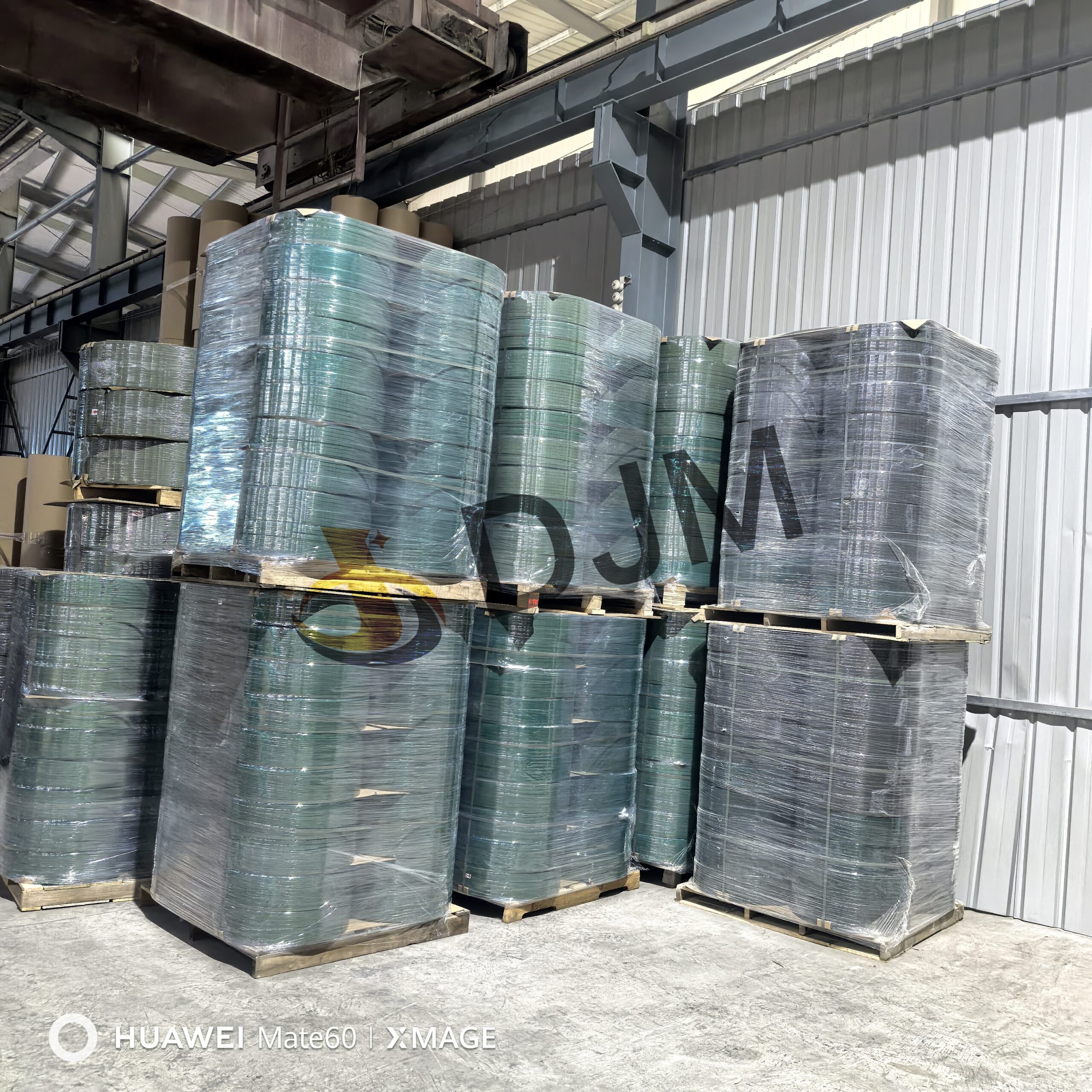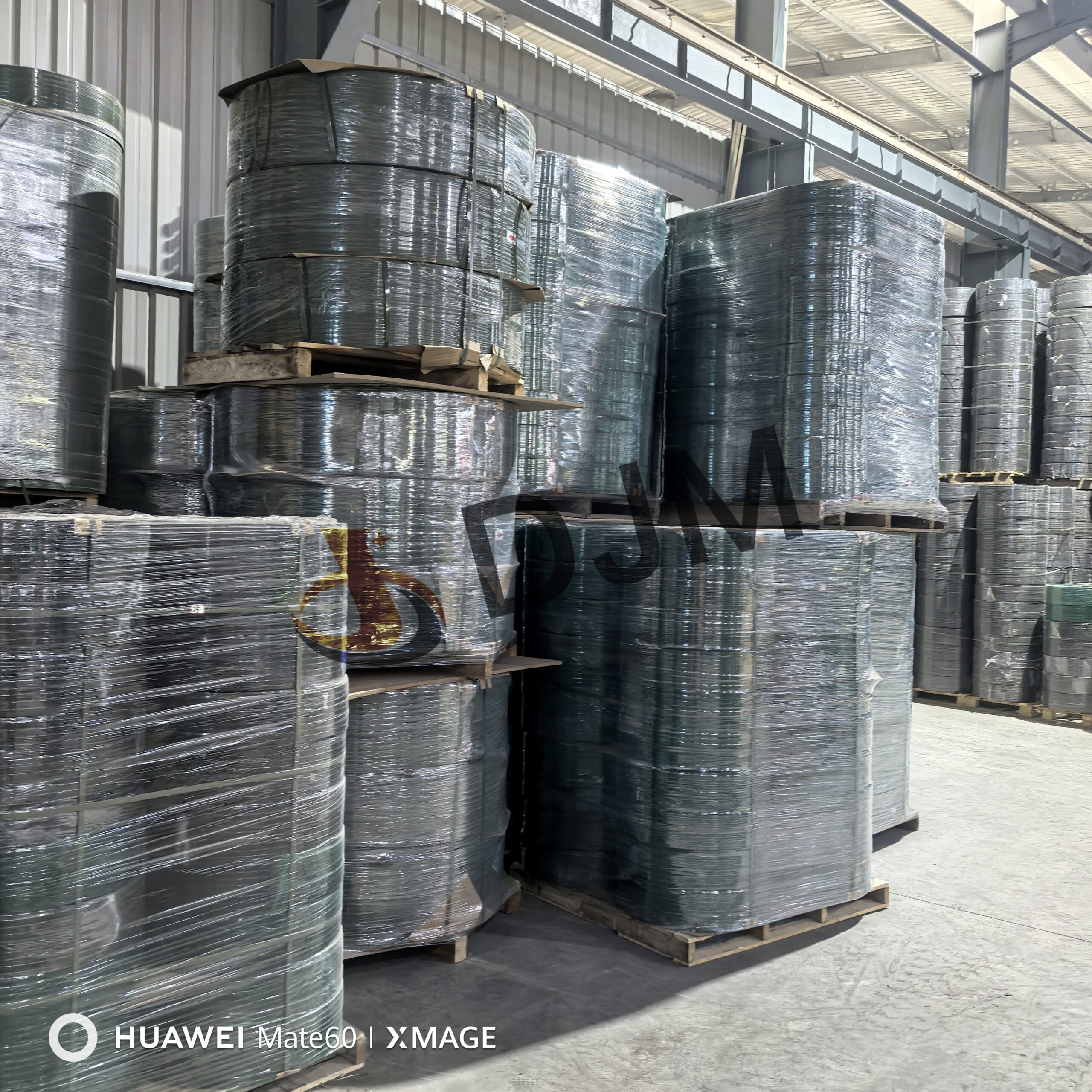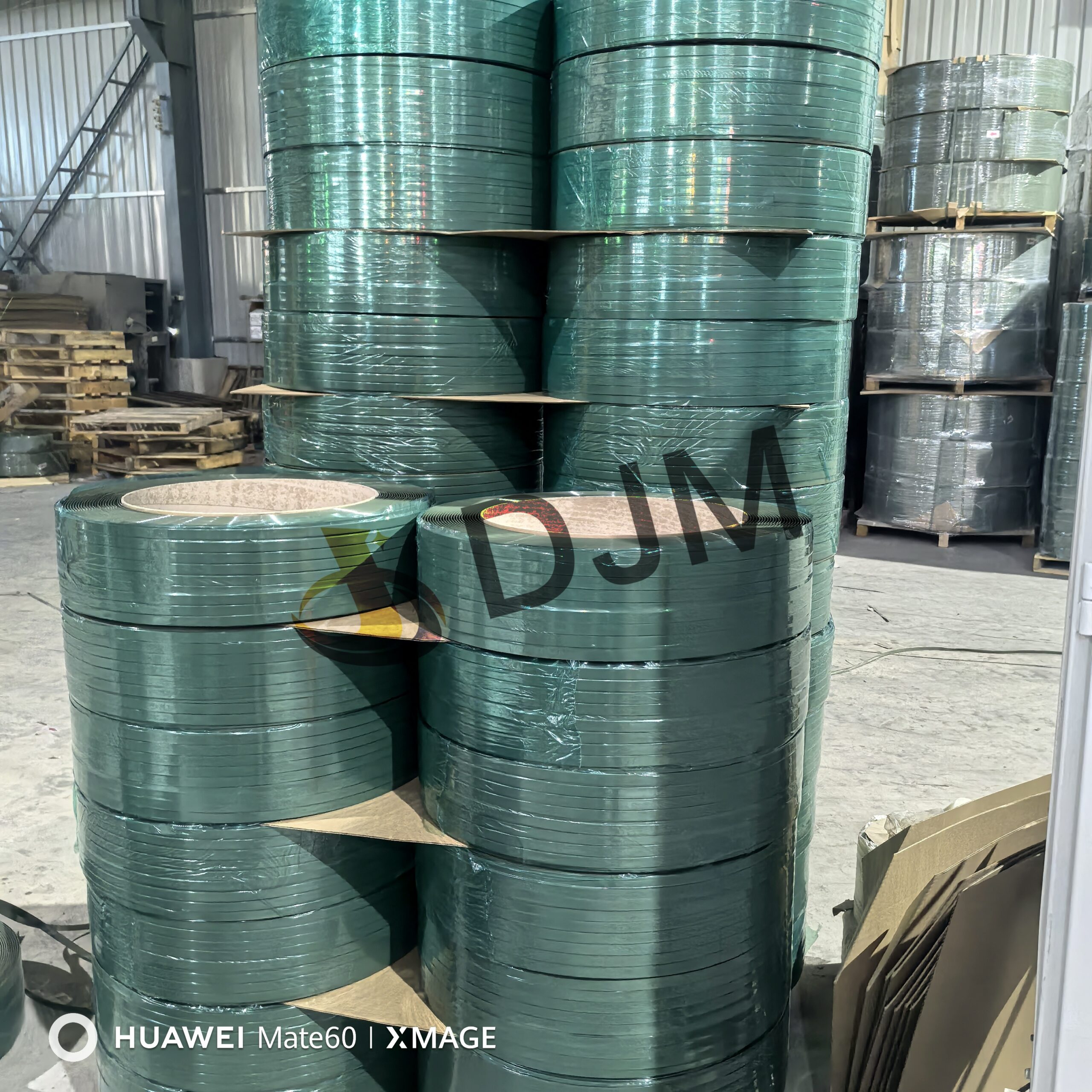PET (Polyester) strapping is extensively used in cement brick manufacturing to securely bundle finished bricks onto pallets for handling, storage, and transportation. Its high tensile strength (typically 3,500–5,500 psi) and exceptional resistance to elongation ensure heavy cement brick stacks remain intact despite vibration and impacts during transit. PET’s inherent moisture and UV resistance prevents degradation in humid curing yards or outdoor storage, while its flexibility minimizes damage to brick edges during tensioning.
**Key Advantages & Size Specifications:**
– **Optimal Sizes**:
– **Width**: 16–25 mm (most common: 19–22 mm)
– **Thickness**: 0.8–1.05 mm
– *Typical Use*: Secures palletized stacks weighing 1–1.5 tons.
– **Critical Advantages**:
– **High Break Strength** (ideal for dense cement bricks).
– **Superior Elongation Resistance** (<3% stretch) for load stability.
– **Corrosion-Free** (vs. steel), eliminating brick surface staining.
– **Safer Handling**: No sharp edges or snap-back risk.
– **Recyclable**: Aligns with sustainable operations.

For optimal performance, a suitable PET strap size for securing these Strapping is typically 12mm to 16mm in width and 0.5mm to 1.0mm in thickness. This size range offers the necessary strength to hold the weight of the cement bricks securely while allowing for easy application and removal during the packaging process. Overall, the use of PET packaging Strapping and appropriate straps enhances operational efficiency in the cement brick production line.
Automated strapping machines efficiently apply PET at high speeds post-curing, ensuring throughput alignment with brick production rates. Its durability reduces breakage-related downtime, offering a cost-effective, high-performance alternative to steel or PP strapping for heavy-duty cement brick logistics.

How many countries have DJM exports?
More than 30 countries and regional
How many series of products DJM have?
a)Concrete Block & Pavers Making Plant
b)AAC Blocks & Bricks Making Plant
c)Concrete batching Plant
d)Stone crusher
What’s kinds of raw material can produce concrete block?
Sand, stone, stone powder, cement, fly ash, slag, steel slag, coal gangue, ceramsite, perlite, construction waste, etc., but the specific formula ratio needs to be confirmed by technicians when encountering special raw materials.
What is the normal size of PET Strapping for the block product line?
Normally we use 1508, 1509, 1510, 1608, 1609,1610 these models PET Strapping for the block product line.

PET (Polyester) strapping is extensively used in cement brick manufacturing to securely bundle finished bricks onto pallets for handling, storage, and transportation. Its high tensile strength (typically 3,500–5,500 psi) and exceptional resistance to elongation ensure heavy cement brick stacks remain intact despite vibration and impacts during transit. PET’s inherent moisture and UV resistance prevents degradation in humid curing yards or outdoor storage, while its flexibility minimizes damage to brick edges during tensioning.
https://youtube.com/shorts/83TwBpKbIhY
Vous avez des questions sur nos produits ?
N'hésitez pas à nous contacter. Les spécialistes produits de DJM sont très heureux de vous aider et de vous fournir des solutions professionnelles et fiables pour vous aider à résoudre divers problèmes.
Devis gratuit
Assurance qualité
Notre société est une entreprise de haute technologie qui intègre la recherche et le développement d'équipements, la fabrication, la vente et le service après-vente.
Copyright © 2024 Quanzhou DJM Equipment Co, Ltd. Tous droits réservés.